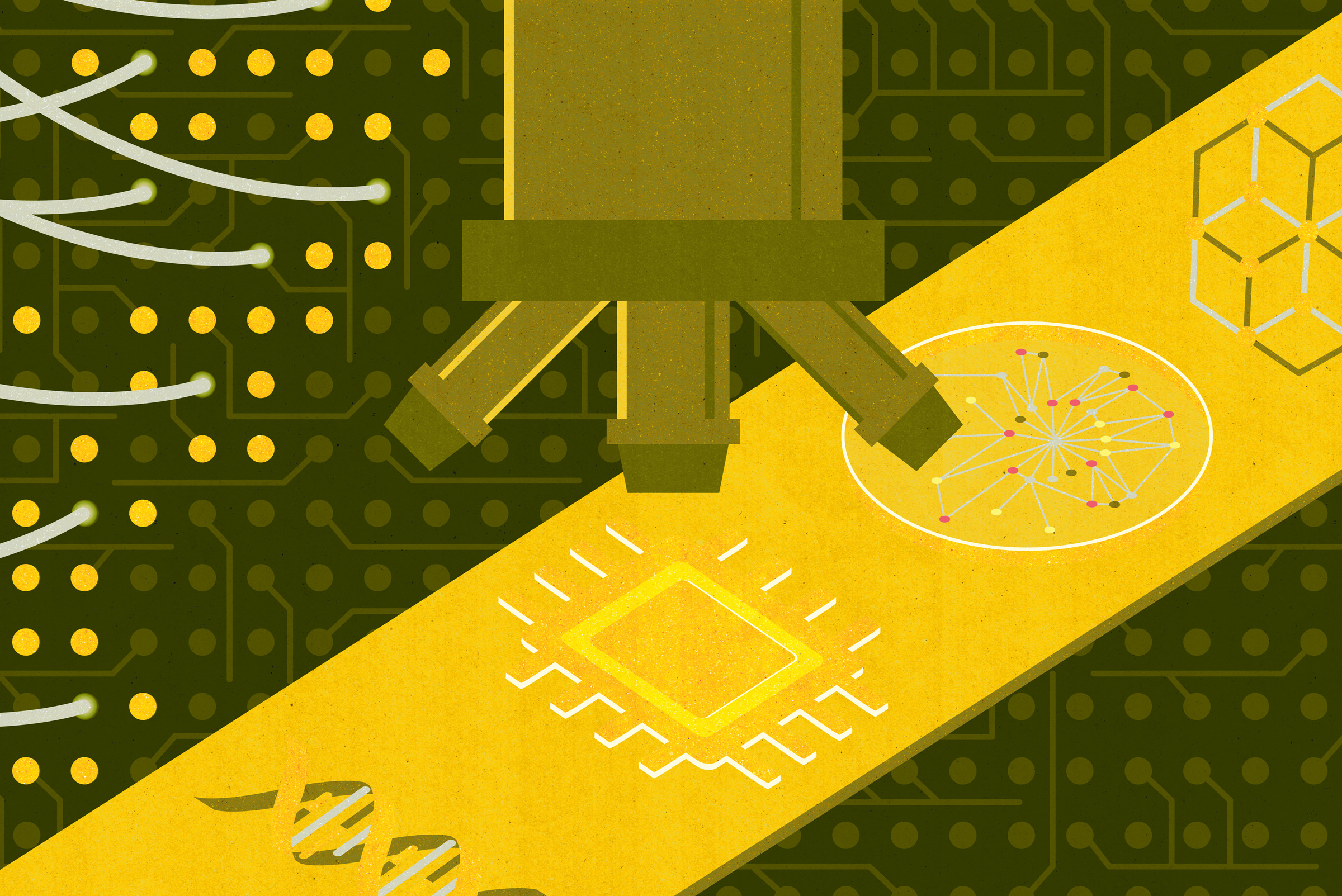By: Stephanie Orford
25 Jan, 2018

The computations that underpin current artificial intelligence (AI) more closely resemble unconscious processing than conscious thought in the human brain, suggesting that AI does not yet possess consciousness. Two particular processes that work synchronously in the human brain may provide key insights.
To find out whether today’s machines demonstrate consciousness, it’s necessary to define consciousness in human and animal brains, then determine whether these qualities are present in AI. Stanislas Dehaene (Collège de France and Inserm-CEA) and Sid Kouider (École Normale Supérieure), both Senior Fellows in the Azrieli program in Brain, Mind & Consciousness at CIFAR, and Hakwan Lau (University of California, Los Angeles and University of Hong Kong) apply a computational lens to this question, reviewing research and providing insights into how human and animal brains process information and comparing the findings to the information processing methods used in today’s AI. The authors seek to foster progress toward artificial consciousness, highlighting features that allow the human brain to generate consciousness so that these insights may be transferred into computer algorithms.
The prospect of machine consciousness has enthralled scientists and sci-fi enthusiasts for decades.
Recent advances in AI have driven progress toward this goal, with the creation of robots that can learn, solve complex problems and adapt to novel environments. However, the question persists of whether the subjective experience of consciousness escapes a computational definition — and whether machine architectures can produce such an experience in AI.
While advances in AI move the field forward, cognitive scientists have been decoding the enigma of consciousness in humans. Researchers have found that consciousness does not rely on a single mechanism, but many different types of computation. Moreover, research reports that the brain processes a vast proportion of information from the environment using unconscious mechanisms, and this information impacts the conscious experience.
The authors review and discuss the various dimensions of how the human brain computes information and how those relate to unconscious or conscious information processing, as follows:
Unconscious computation: Neuroimaging research has revealed that most regions of the brain can be activated unconsciously. Meaning extraction, visual recognition of words or faces, reinforcement learning, cognitive control, and decision-making are a few examples of unconscious processing in humans. These strongly impact conscious processing.
Global availability computation is the selection of external information to become available to the brain’s many specialized subsystems for further processing. Research has associated global availability processing with a wide range of computations, including recollection, visual illusions, and serial information-processing. These systems converge toward making a single decision. Essentially, it makes possible coherent, thoughtful planning.
Self-monitoring computation is the brain’s ability to monitor its own knowledge and abilities, such as confidence in decisions, reflection, error detection, monitoring the quality of memory representations (meta-memory), and distinguishing reality from perception. This type of processing is also called introspection or meta-cognition.
Presence of consciousness: Global availability and self-monitoring computations can operate separately, but it’s only when the two work together that consciousness is present in humans. Case studies involving patients who have lost one of these abilities also describe a loss of conscious awareness, suggesting both are necessary for complete human consciousness.
These features of conscious thought challenge the idea that the subjective experience of consciousness escapes a computational definition.
Informed by research indicating that global availability and self-monitoring computations work together to produce consciousness in humans, the authors infer that consciousness is not yet present in AI.
To tackle machine consciousness, Dehaene, Lau, and Kouider argue that it’s necessary to analyze the specific types of computations that make up consciousness in humans. They suggest that consciousness may not be fully explained by other current models.
The authors note that the empirical evidence reviewed is compatible with the possibility that specific computations are what produce consciousness in humans. Current AI platforms are built on sophisticated computations, but most of these are equivalent to unconscious computational processes in the human brain and not to those believed to produce consciousness.
To zero in on machine consciousness, researchers should aim to generate computational processes similar to those that give rise to two main types of consciousness in humans: global availability consciousness and self-monitoring. Developing similar types of information processing mechanisms in AI may lay the foundation for consciousness in machines.
REFERENCE
Stanislas Dehaene et al., What is consciousness, and could machines have it? Science 2017;358:issue 6362.